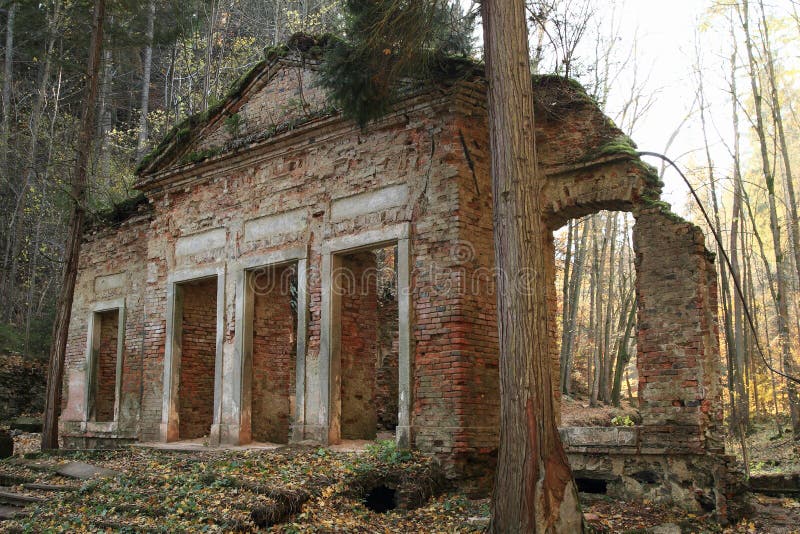

The towers were probably built between the 9th and 12th centuries. The Round Tower at Kinneigh has a unique hexagonal base. However, the use of ladders prior to the construction of such steps Excavations in the 1990s, revealing postholes, confirm that wooden steps were built. The distance from the ground to the raised doorway is somewhat greater than that from the first floor to the second thus large, rigid steps would be too large for the door. The buildings still stand today because their round shape is gale-resistant and the section of the tower underneath the entrance is packed with soil and stones. Building the door at ground level would weaken the tower. The tower at Monasterboice has an underground foundation of only sixty centimetres. The towers were generally built with very little foundation. The main reason for the entrance-way being built above ground level was to maintain the structural integrity of the building rather than for defence. The cap (roof), is of stone, usually conical in shape, although some of the towers are now crowned by a later circle of battlements. The windows, which are high up, are slits in the stone.

Within, in some, are two or more floors (or signs of where such floors existed), usually of wood, and it is thought that there were ladders in between. The lower portion is solid masonry with a single door raised two to three metres above, often accessible only by a ladder. The masonry differs according to date, the earliest examples being uncut rubble, while the later ones are of neatly joined stonework ( ashlar). Surviving towers range in height from 18 metres (60 ft) to 40 metres (130 ft), and 12 metres (40 ft) to 18 metres (60 ft) in circumference that at Kilmacduagh being the highest surviving in Ireland (and leaning 1.7 metres (5 ft 7 in) out of perpendicular). Knowledge of this fact has made it possible, where towers still exist, to determine without excavation the approximate sites of lost churches that once stood nearby. As their name Cloigtheach indicates, they were originally bell towers, though they may have been later used for additional purposes.Ī tower of this kind is generally found in the vicinity of a church or monastery, with the door of the tower facing the west doorway of the church. Irish round towers ( Irish: Cloigtheach (singular), Cloigthithe (plural) literally 'bell house') are early mediaeval stone towers of a type found mainly in Ireland, with two in Scotland and one on the Isle of Man. The round tower at Glendalough, Ireland, is approximately thirty metres tall. Irish mediaeval stone tower beside a church or monastery


 0 kommentar(er)
0 kommentar(er)
